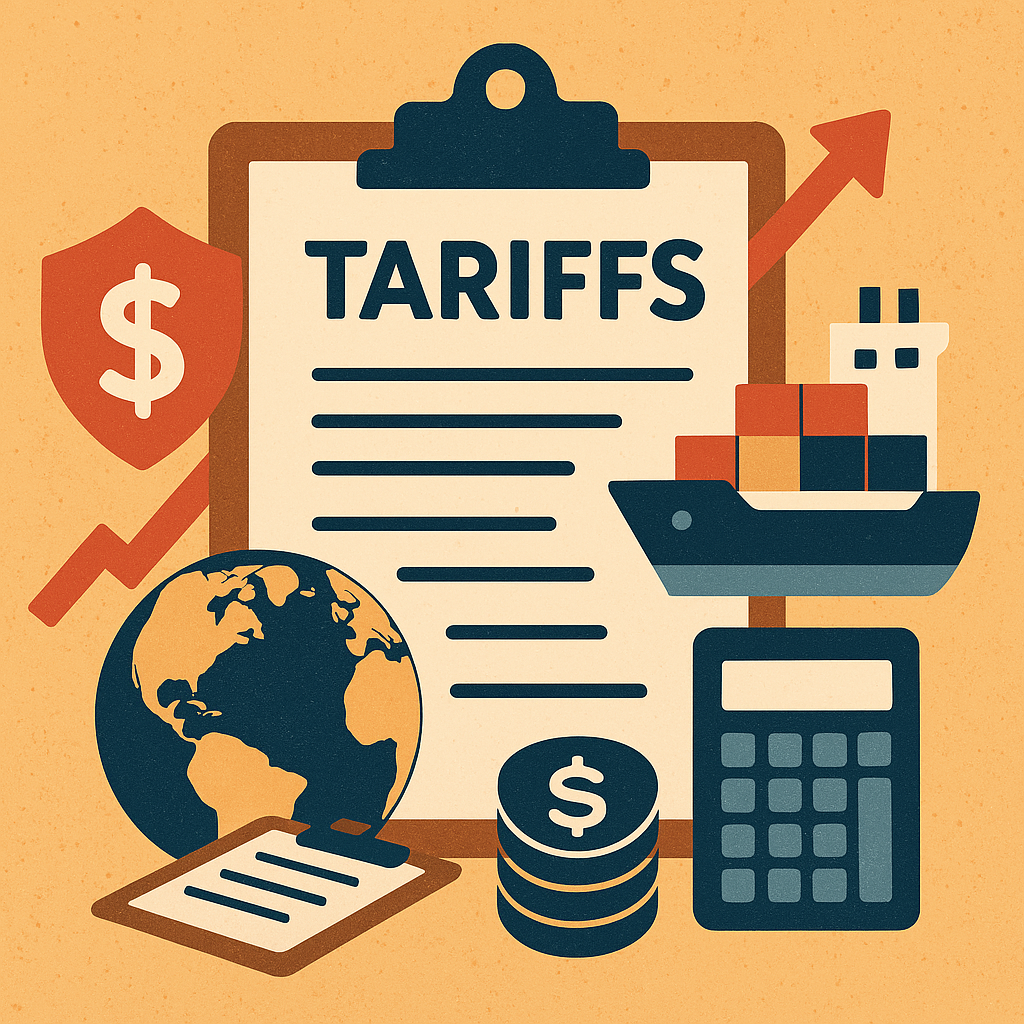Introduction
Tariffs are a fundamental aspect of international trade policy. They influence economies, impact consumer prices, and shape diplomatic relations between nations. Governments implement tariffs for various reasons, including protecting domestic industries, generating revenue, and negotiating trade agreements. This article explores the mechanics of tariffs, their types, effects, historical significance, and modern-day implications.
What Are Tariffs?
A tariff is a tax or duty imposed by a government on imported goods. Tariffs are designed to make foreign products more expensive, encouraging consumers to buy domestically produced goods instead. They are one of the oldest tools used to regulate trade and have been at the center of economic discussions for centuries.
Objectives of Tariffs
Tariffs serve several key purposes:
- Protect Domestic Industries: They make imported goods costlier, allowing local businesses to compete.
- Generate Government Revenue: Some countries use tariffs as a source of income.
- Trade Policy Tool: Tariffs can be used strategically in negotiations and diplomatic relations.
- Correct Trade Imbalances: They can help counteract unfair trade practices, such as dumping.
Types of Tariffs
There are several types of tariffs, each with a unique method of implementation and impact on trade.
Specific Tariffs
Specific tariffs impose a fixed amount of tax per unit of an imported good. For example, a government might charge $5 per ton of imported steel. This type of tariff remains consistent regardless of price fluctuations in the global market.
Ad Valorem Tariffs
Ad valorem tariffs are calculated as a percentage of the value of the imported goods. For instance, a 10% tariff on imported automobiles means that a car valued at $30,000 will be taxed $3,000 upon entry into the country.
Compound Tariffs
A combination of both specific and ad valorem tariffs, compound tariffs impose both a fixed charge and a percentage-based tax on imported goods. For example, an imported item may be taxed $5 per unit plus 5% of its total value.
Protective Tariffs
Governments impose protective tariffs to shield domestic industries from foreign competition. These tariffs intentionally raise the price of imports so that local businesses can thrive.
Revenue Tariffs
Some tariffs are designed primarily to generate government revenue rather than protect local industries. These tariffs apply to essential imports where demand remains stable regardless of price changes.
Retaliatory Tariffs
These tariffs are imposed as a countermeasure against unfair trade practices. If a country unfairly subsidizes exports, other nations may respond with retaliatory tariffs to level the playing field.
How Tariffs Work
The mechanics of tariffs involve various steps from implementation to their effect on international trade:
- Government Policy Decision: A country’s government sets tariff rates based on trade agreements, economic objectives, or geopolitical strategy.
- Customs Collection: Tariffs are collected at ports of entry when imported goods arrive.
- Impact on Import Prices: Importers typically pass on the additional costs to consumers, making foreign goods more expensive.
- Competitive Adjustment: Domestic manufacturers may benefit from increased demand as imported alternatives become less attractive.
- Potential Trade Disputes: If tariffs disrupt trade relations, affected countries might retaliate, leading to trade wars.
The Economic Effects of Tariffs
Tariffs have far-reaching consequences that impact businesses, consumers, and global markets.
Impact on Businesses
- Domestic Businesses Benefit: Local companies gain a competitive edge as imported goods become more expensive.
- Exporters May Face Retaliation: If a country imposes tariffs, trading partners may respond with their own tariffs, affecting exporters.
- Supply Chain Disruptions: Businesses relying on imported raw materials may face higher costs, forcing price hikes.
Impact on Consumers
- Higher Prices for Imported Goods: Tariffs typically lead to increased costs for consumers.
- Limited Product Choices: Consumers may have fewer options as some imports become financially unfeasible.
Impact on Trade Relations
Tariffs can strengthen or strain diplomatic relationships between countries. While they protect domestic industries, they may also lead to trade disputes and economic retaliation.
Impact on Government Revenue
For some nations, tariffs serve as a steady revenue stream. However, excessive tariffs can reduce imports, negatively impacting government income over time.
Historical Context
Tariffs have played a central role in global trade history:
The Smoot-Hawley Tariff Act (1930)
This U.S. legislation imposed high tariffs on imports, aiming to protect American jobs during the Great Depression. However, it exacerbated economic downturns as other nations retaliated, reducing global trade.
China-U.S. Trade War
In recent years, tariffs have been a focal point of the China-U.S. trade dispute. Both nations imposed retaliatory tariffs on each other’s goods, affecting industries and global supply chains.
Modern-Day Tariff Strategies
Today, tariffs remain a key policy instrument in international trade. Governments adjust tariffs strategically based on economic conditions:
- Free Trade Agreements (FTAs) reduce or eliminate tariffs between member nations.
- Tariff Rate Quotas (TRQs) allow a limited quantity of imports at lower tariff rates.
- Temporary Tariffs address short-term economic challenges.
Conclusion
Tariffs are a powerful economic tool that influence trade, industries, and geopolitical relations. While they protect domestic markets, they also pose challenges such as higher consumer costs and potential trade disputes. Understanding tariffs is crucial in assessing their impact on businesses, consumers, and the global economy.

